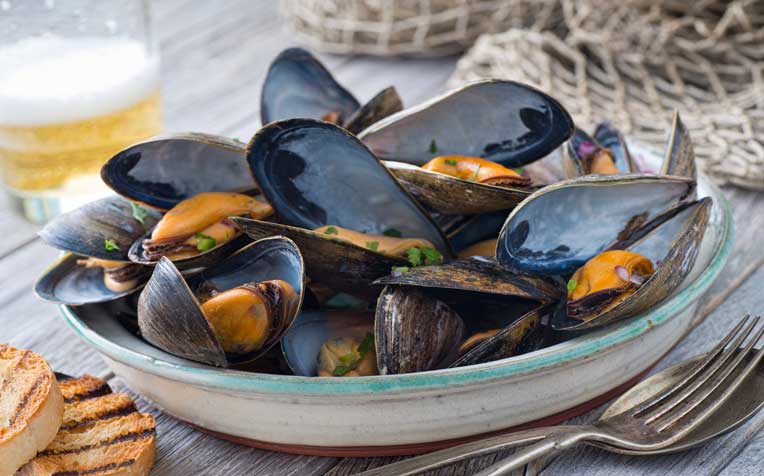
Avoid foods rich in purines, a main cause for gout.
Diagnosis
Besides evaluating the symptoms, performing a clinical examination and measuring the blood uric acid levels, the most conclusive test for gout is the joint aspiration procedure. This is a simple procedure where a needle is used to remove a sample of fluid from the affected joint. The presence of uric acid crystals (monosodium urate crystals) confirms the diagnosis of gout. However, the absence of such crystals does not rule out gout. Most people with gout have hyperuricaemia but hyperuricaemia may not be present during an acute attack. Hyperuricaemia alone does not mean that a person has gout.
Treatment
The treatment of gout depends on the stage of the disease.
-
For an acute attack:
- The crucial step is to provide pain relief and shorten the duration of inflammation.
- The goal in the management of gout is to prevent recurrent or future gouty attacks with the ultimate objective of preventing joint damage.
-
Treatment is tailored for each person and medications are used to:
- Relieve the pain and swelling during an acute episode.
- Prevent future episodes.
- Prevent or treat tophi, which are nodules of crystallised uric acid formed under the skin that can become swollen and cause pain during gout attacks.
Medication for acute episodes
Non-steroidal anti-inflammatory drugs (NSAIDS) for example, Naproxen, Mefenamic acid, Indomethacin, or Diclofenac are commonly used to relieve pain and swelling during an acute gout episode.
-
NSAIDS usually begin to work within 24 hours.
- Their side effects include stomach upset, skin rashes, fluid retention or kidney problems and stomach ulcers.
- They should be used cautiously in patients with kidney impairment and stomach ulcers.
- Newer drugs called COX-2 inhibitors may be safer for the stomach.
- Corticosteroids work quickly as well and can be taken by mouth or injected directly into an inflamed joint to relieve the pain and swelling of an acute episode of gout.
-
Colchicine gives prompt relief when taken at the first sign of an attack.
- Common side effects include abdominal cramps or diarrhoea.
- Lower doses of colchicine can be taken daily to prevent future attacks.
Ref: S13
Also, check out our other gout articles:
Contributed by

















 Get it on Google Play
Get it on Google Play